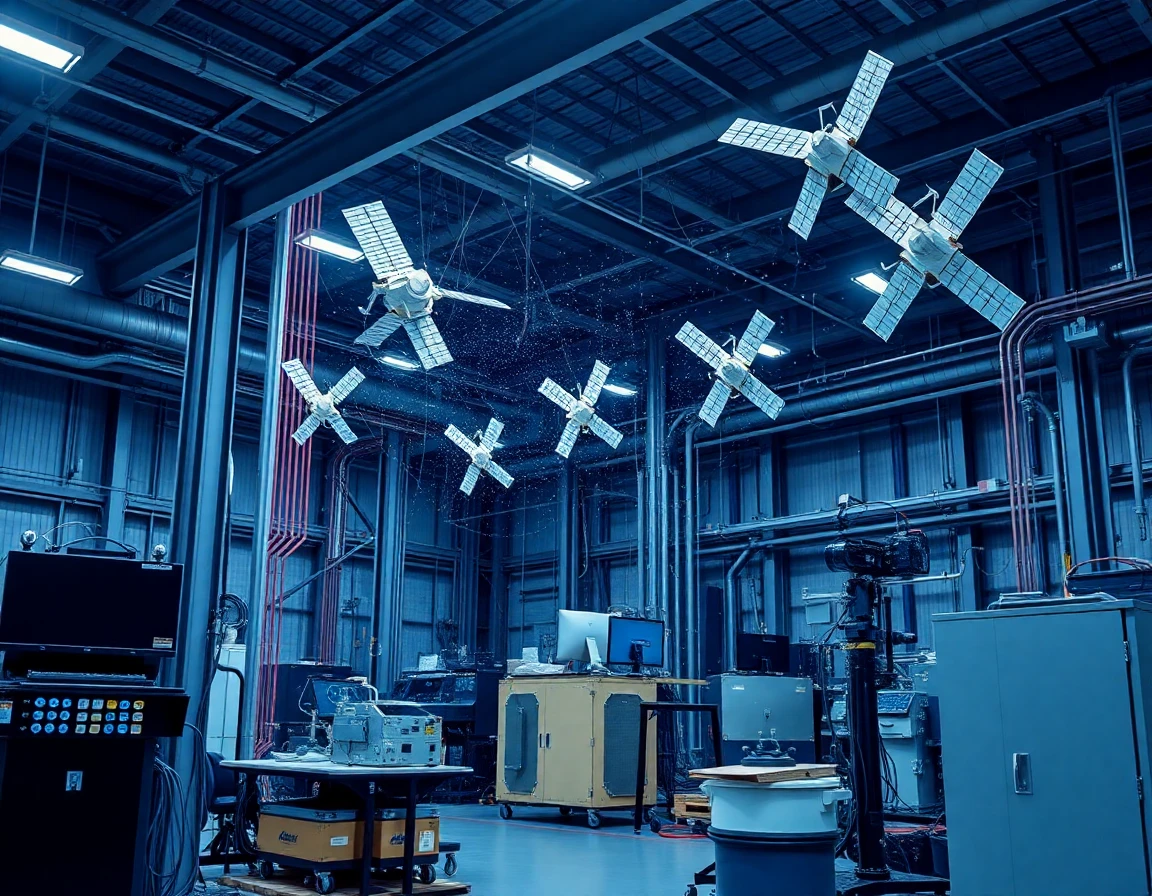Satellite constellations are rapidly becoming the backbone of global communications infrastructure, providing unprecedented internet and communication coverage worldwide. As technology advances, major players in the aerospace and defense sectors are investing heavily in satellite networks to ensure seamless connectivity in remote areas and across urban landscapes.
Understanding Satellite Constellations
A satellite constellation consists of a group of satellites that work together in a coordinated manner to provide expansive coverage over the Earth’s surface. Unlike traditional geostationary satellites, which orbit at a high altitude, constellations typically employ low Earth orbit (LEO) satellites, which can significantly reduce latency and improve data transmission speeds.
The Rise of LEO Satellite Networks
Recent advancements in satellite technology have led to the deployment of large LEO satellite constellations. Companies like SpaceX with its Starlink, Amazon’s Project Kuiper, and OneWeb are at the forefront of this revolution. According to a report from the Satellite Industry Association, the number of satellites in orbit has tripled since 2018, with LEO satellites making up a significant proportion of this growth.
Benefits of Satellite Constellations
The benefits of satellite constellations are multifaceted:
- Global Reach: They provide internet access to remote and underserved regions.
- Reduced Latency: LEO satellites can transmit data faster than traditional satellites, enhancing user experience.
- Scalability: Operators can add more satellites to the constellation to accommodate growing demand.
As noted by Dr. Emily Carter, an aerospace engineer at the International Space Research Institute, “The deployment of satellite constellations marks a pivotal moment for global connectivity. We are not just providing internet; we are enabling opportunities for education, commerce, and innovation in areas previously left behind.”
Key Technologies Behind Satellite Constellations
To achieve their objectives, satellite constellations utilize several advanced technologies:
- Precision Accelerometers: These devices are vital for maintaining the satellites’ accurate positioning and stability in orbit. Companies like Northrop Grumman produce high-precision accelerometers that ensure reliable performance in the demanding environment of space.
- Inertial Navigation Systems: These systems help satellites navigate through space, ensuring they remain in their designated orbits while compensating for gravitational variations. Advanced inertial navigation systems are crucial for the success of these networks.
- Thermal Management Systems: Operating in the harsh conditions of space requires sophisticated thermal management solutions to protect sensitive equipment from extreme temperatures.
Industry Context and Competitive Landscape
The surge in satellite constellation deployment is reshaping the competitive landscape of telecommunications. Traditional telecommunications companies are now competing with tech giants who are entering the space sector. The demand for high-speed internet has increased, especially post-pandemic, as remote work and online learning have become the norm.
According to a recent analysis by Market Research Future, the global satellite communication market is expected to reach $100 billion by 2025, driven largely by the growth in satellite constellations.
Future Developments: What Lies Ahead
As more satellites are launched, the potential for new applications continues to expand. Future developments may include:
- Enhanced IoT Connectivity: Satellite constellations could facilitate connectivity for Internet of Things (IoT) devices in remote locations, enabling agriculture, logistics, and environmental monitoring.
- Global Disaster Response: Enhanced communications capabilities can significantly improve response times during natural disasters.
- Space Traffic Management: With increasing numbers of satellites in orbit, managing space traffic will become crucial to prevent collisions and ensure sustainable space operations.
Conclusion: A New Era of Connectivity
The expansion of satellite constellations is more than just a technological advancement; it’s a transformative movement that promises to democratize access to information and services globally. As experts like Dr. Carter emphasize, “We are on the brink of a new era where connectivity will be a right, not a privilege.” The ongoing advancements in satellite technology, combined with the increasing number of constellations, signal a future where the world is more interconnected than ever before.
As the satellite communication industry continues to evolve, it will be essential for stakeholders to address challenges, including regulatory hurdles and the need for sustainable practices in space. With the right strategies in place, satellite constellations can usher in a future of limitless connectivity and global collaboration.
Tags: [satellite constellation, satellite communication, global internet access]
Category: industry
References
-
satellite constellation Research - defensenews.com (defensenews.com)
-
satellite constellation Research - aviationweek.com (aviationweek.com)
-
satellite constellation Research - spacenews.com (spacenews.com)



